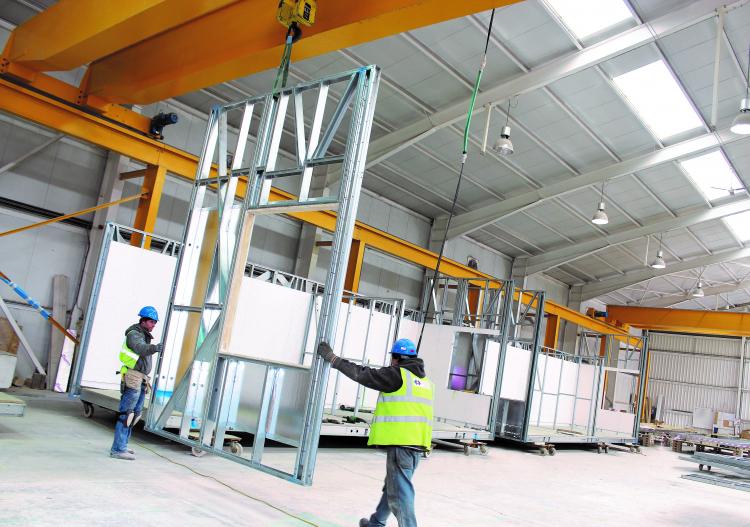Identifying Industry Change
Interest around offsite construction in UK housebuilding is growing rapidly and this 'surge' has been reflected in the NHBC Standards 2019. Richard Lankshear, Innovation Manager at NHBC, outlines a busy period ahead for the organisation.
Last year NHBC received a record number of modern methods of construction (MMC) systems to review via our dedicated online hub, which lists more than 50 current systems that we now accept as acceptable for use in homes that can achieve an NHBC warranty. This surge of activity is mirrored across many parts of the industry. In the past few months alone, we have been invited to eight different factories producing a variety of systems assembled offsite as well as witnessing new technologies onsite such as cross laminated timber (CLT) homes and storey-height aerated concrete panels.
While some of the systems are innovative in the use of new materials or even 3D printing, more frequently they are using established building technologies, but it is where and how they are assembled that is 'Modern'. At NHBC, we identify MMC as offsite manufacture, innovative technologies and other non-conventional methods of construction that form the structure and envelope of the home.
This includes sub-assemblies, volumetric and panelised systems manufactured offsite as well as site-based MMC. Not all offsite manufacture is necessarily MMC, as many established forms of construction (timber or steel frame for example) are assembled offsite. However, if the panels are closed in the factory so that they cannot be inspected onsite, then we will treat them as an MMC system. At NHBC we have a specific way of assessing MMC systems before they are used onsite. In this way, builders and homeowners can gain comfort that a review has been carried out in advance against the requirements of the NHBC Standards.
The process, as detailed on the MMC Hub, includes a desk study of the design and evidence of performance of the system, a review of the factory production controls and witness of a pilot scheme to see how the design can be built on site. We then inspect the construction of the finished home on site to warrant the whole home. We know that the vast majority of homes are built with traditional cavity masonry - 75% in 2018, with 15% in timber frame and around 1% in light steel frame with the balance in framed structures or unique systems.
However, with the growth in MMC variety of construction methods appears to be increasing, so from April 2019, we will start collecting data on all construction methods, including those using innovative technologies or offsite construction. What is interesting is the change in types of systems that we have been asked to review over time. There was a notable spike in 2016 with the number of offsite manufactured panelised systems and a number of onsite technologies such as insulated formwork and thin bed-joint mortars. However, while the number of systems submitted continues to rise, we are seeing more and more volumetric systems submitted - nearly one in three enquiries in 2018 related to volumetric systems.
This trend is reflective of the research carried out for the NHBC Foundation report on MMC published in December 2018 that suggests that volumetric modules may be gaining greater acceptance with time. The research findings showed that better quality is the primary factor, closely followed by improved efficiency, accelerated delivery and increased productivity. In our opinion, the focus on better quality is paramount. Not just because MMC has the potential to reduce defects, but because if quality is not delivered, then the benefits of productivity or efficiency are not achieved as projects are then delayed on site while defects are rectified.
